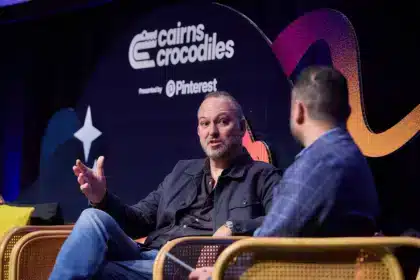There hasn’t been a week in the last few months without a significant development in the video advertising sector, writes Millward Brown’s Jane Ketelbey.
In May, Facebook launched video ads in Australia. August saw the launch of in-feed native video ads in Twitter. September saw the launch of the first video ads in Spotify and just a few weeks ago we saw the GroupM and Google partnership announced. Net net, video is hitting its stride and everyone wants a piece of the considerable action. Action that PWC/IAB figures put at having almost tripled to $196 million in the 2014 financial year.
Historically, video advertising has revolved around the 30 second TV spot. This has been able to perform a multitude of roles: from driving persuasion for new products to relaunching brands seeking new market difference, to supporting the equity of the most loved brands, without a hint of rational messaging. The 30 second spot has been supported by longer and shorter forms, each with their own merits. 15 seconds are well suited to supporting simple communication and extending the life of more expensive 30 seconds ads. 60 seconds have allowed advertisers to tell more complex, more emotional stories, in a way that makes the execution more of an event.
But of course the world has now changed. Advertisers are media owners and not just media buyers. Smartphones have put video into people’s hands wherever they are and content is being consumed in a very different way. In this new world we are seeing significant activity at both ends of the spectrum. On the one hand, we are seeing more and more long form video: the most popular ads on YouTube average two minutes and one in eight are over five minutes. On the other, Vine is championing and popularising the micro-video format in just six seconds.
Whilst there has never been more opportunity for marketers to use video to create value and meaning for their brands, it is clear that not all branded Vines and branded long form videos are created equal. To help figure things out, we recently conducted primary research, using online quantitative methodology, combined with facial coding and individual depth interviews to look at how Vines (six seconds), a standard length TV ad (30 or 60 seconds ad) and a three to six minute piece of video performed for five global brands.
You can read the details of the research and watch the video content in more detail here but the five things that marketers should know and understand about the long and the short of it are as follows:
Long form
- Hold’em: Recognise that there’s no such thing as a captive six minute audience unless you captivate them. Inspire, surprise or excite but be prepared for, and embrace, a greater likelihood of polarisation.
- Out and Proud: Branding is not the enemy of success; even sponsored content does not need to be overly subtle if the partnership works. Brand with confidence.
- Keep it clean: A larger canvas gives you more creative freedom, but you still need to retain focus; people are still unlikely to take away more than two messages. Keep your canvas clean.
- What’s in it for me: Deliver some kind of reward (whether that’s unusual access, useful information or an emotional payoff).
- Where’s the call to action: Don’t worry about including a call to action; just focus on providing engaging content. Viewers are online anyway, they’ll click if they want to. Don’t demand immediate response.
Vines
- Play…
- Play to its format: Make the most of what’s currently unique about the format – 6 seconds, the ability to stop and start the video and how easy it is for consumers to create– but don’t expect too much of the viewer. Celebrate the format.
- Play with its format: Experiment while the format is still young and work out what works and what doesn’t, so you can maximise return when Twitter ramps up monetisation.
- Keep it simple but not simplistic: Ease of viewing and understanding the Vine plays a big role in how impactful it is. There is a continuum from overly simple through to overly demanding with a sweet spot in between. One explicit message works best.
- Keep it real: Make the content authentic but not too polished. If you are using an agency to create the Vines then you may want to dial down the production values.
- Don’t be brand shy: Brand – or cue the brand – throughout the Vine and not just the real estate around the video. You can’t guarantee that people will look at who has posted the Vine, the caption of the hashtags.
- Things grow on the Vine: Whilst, like a lot of content, they rarely work in isolation, Vines can give resonance to content from longer forms of video and other channels. They provide another way for a brand to reach their audience and can trigger other memories to extend the brand.
Video has the power to deliver optimal impact on TV and on mobile devices and create value for brands with the courage, insight and creativity to make informed, yet brave choices.
Jane Ketelbey is the client services director at Millward Brown Australia.








